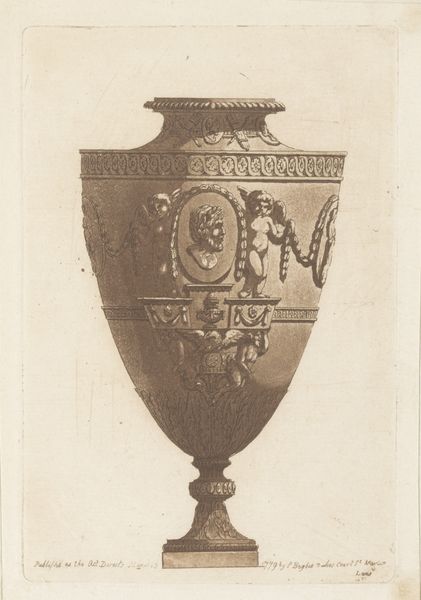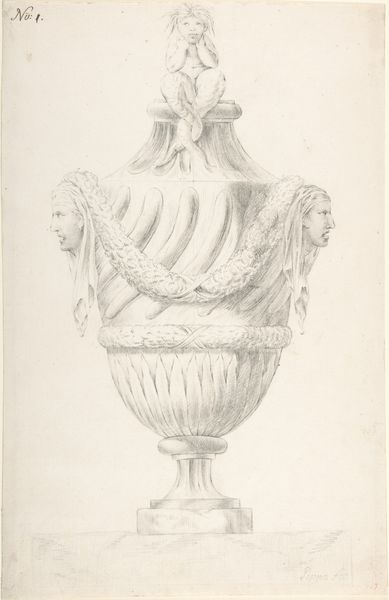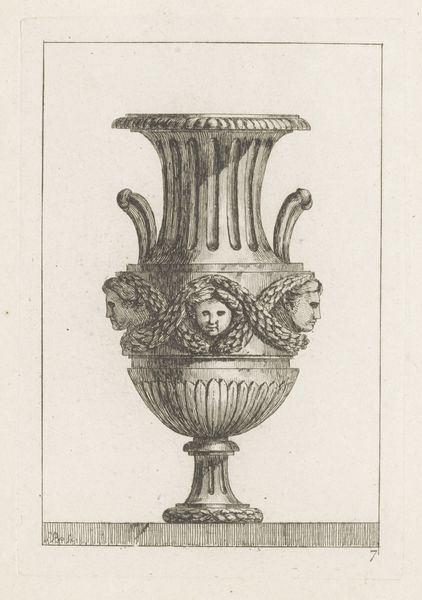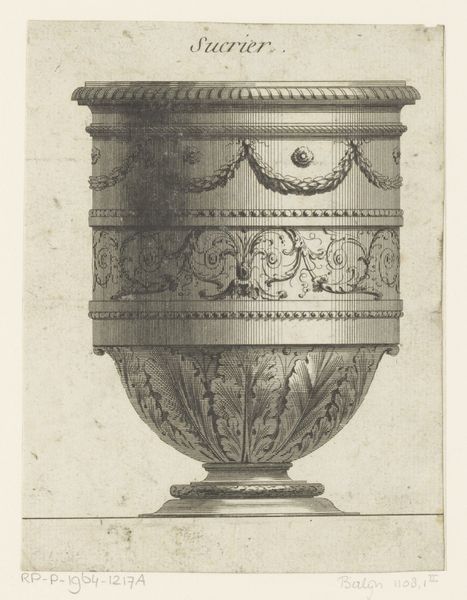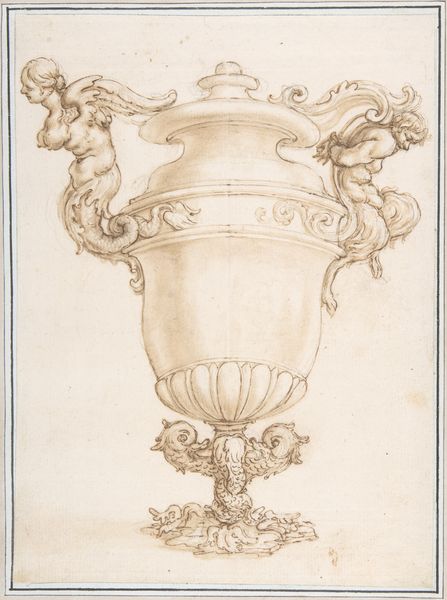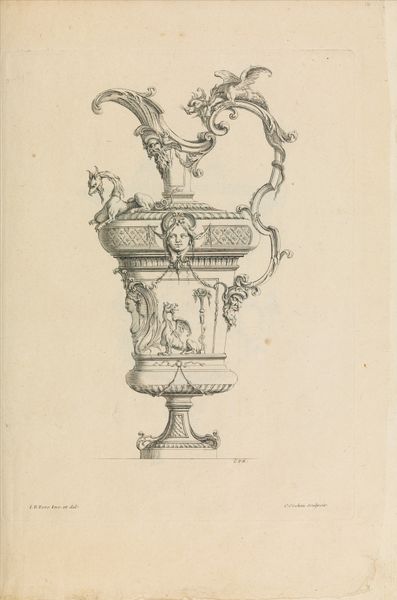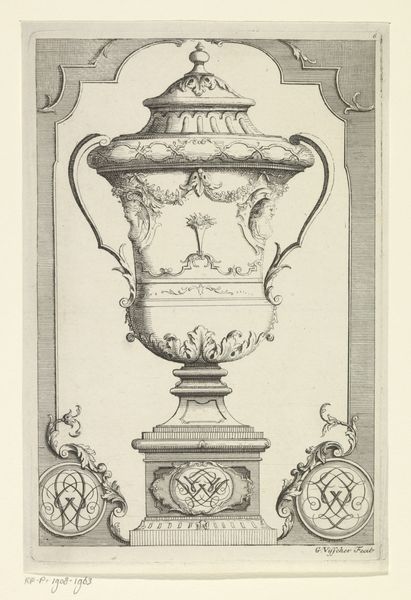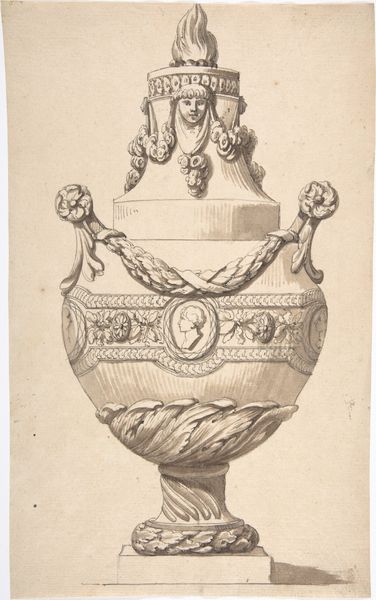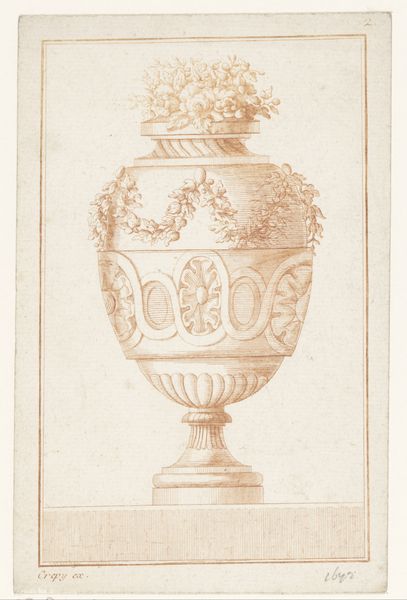
drawing, pencil
#
drawing
#
neoclacissism
#
geometric
#
pencil
Dimensions: 14 11/16 x 9 5/16 in. (37.3 x 23.7 cm)
Copyright: Public Domain
Curator: Here we have a delicate pencil drawing from the late 18th century titled "Design for an Urn." It’s part of the Metropolitan Museum of Art’s collection and is attributed to an anonymous artist. Editor: My first thought? Elegant morbidity. It’s so precisely rendered, yet… well, urns are for ashes, right? A fancy resting place, beautifully depressing. Curator: Precisely! This drawing is an exquisite example of Neoclassical design, a style that sought to revive the aesthetics of ancient Greece and Rome. Notice the geometric precision. Everything about this screams order, balance, and restrained ornamentation. Editor: Those stoic faces serving as handles really cement the mood. Are those supposed to be gods? Or just very fancy gargoyles guarding eternal slumber? I can see their sadness somehow! It feels ancient. Curator: Perhaps more like theatrical masks; that would connect back to antiquity and the performing of tragedy in Greek and Roman societies. I wonder how the scale of this would function in a landscape. Would it have held real ashes? Or would it have purely been a decorative garden feature? Editor: The base even features a Greek Key pattern, that maze-like design seems so full of choices that can ultimately dead-end. There's almost something chilling in that pursuit of symmetry, the perfection is itself... confining. Curator: Neoclassicism can indeed feel that way. It represented a desire for order and reason following periods of upheaval in Europe. But to design an urn with this much thought also points to a fascination, a rather morbid acceptance of our mortality. Editor: The way the light is sketched in makes it appear almost ethereal. Not quite real. Almost as if the design existed more as an idea than as a plan for manufacture. Curator: So well observed! In looking at this drawing, you get a real sense of the period’s sensibilities – the focus on history, beauty, and yes, even contemplating death as an inevitable, albeit aesthetically pleasing, part of life. Editor: It’s a powerful piece, even if it's just a drawing. Now, if you’ll excuse me, I think I need something a little less…final. Maybe a nice landscape painting!
Comments
No comments
Be the first to comment and join the conversation on the ultimate creative platform.

